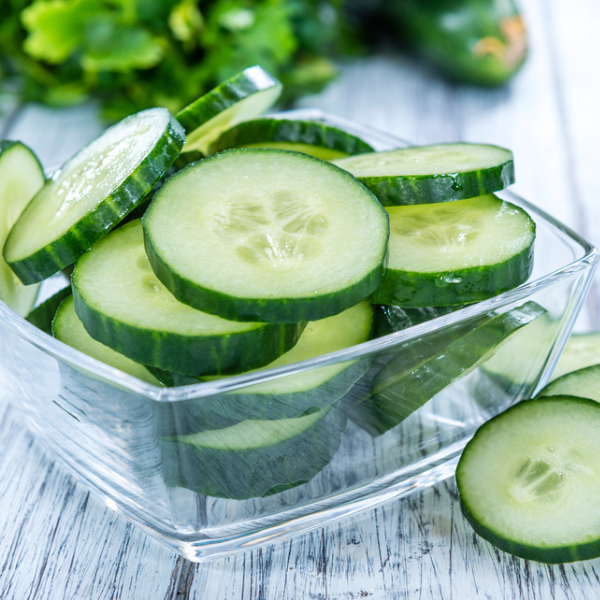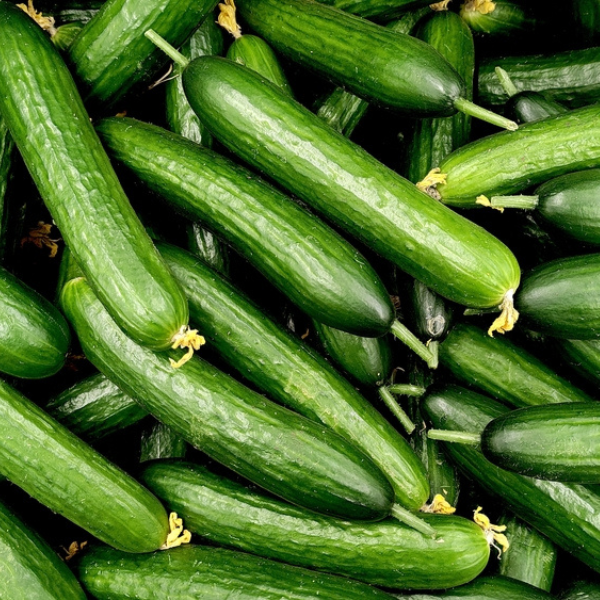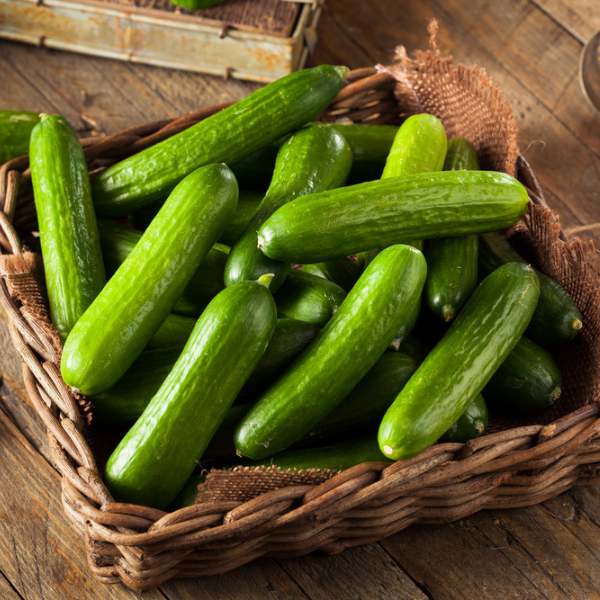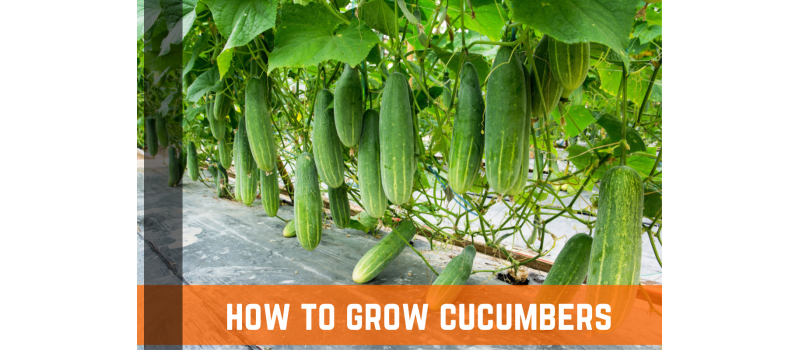Cucumbers were first widely accepted by both the upper and lower classes in the Roman Empire. Cucumbers have enjoyed enduring popularity in Italy for many years due to their simplicity of cultivation and large range of kinds and flavors. Cucumbers were commonly employed as a source of different therapeutic treatments in addition to being consumed.
They were carried around by spouses who wanted children and treated anything from poor eyesight to scared mice to treat scorpion bites. The most well-known instance of the fascination with cucumbers in ancient Rome occurred during the brief rule of Emperor Tiberius, who insisted on eating cucumber every single day of the year.
His veggies were cultivated in their own individual gardens in the summer, and in the winter, cucumber was produced on mobile bed frames that could be moved to be open to the sun or lighted by mirror stones. Cucumbers saw a lengthy decline in popularity following the fall of Rome. They reappeared at the courts of Charlemagne in the eighth and ninth centuries, and they finally reached England in the fourteenth.
Cucumbers returned to England in the middle of the 17th century after making a successful first contact with the inhabitants there. This plant has been utilize for a very long time and it is no wonder why any hobby gardener would want to add this plan to their home garden.

Optimal Growing Conditions
There are two types of cucumber plants: vining and bush. While bush varieties grow into a more compact plant, vines wriggle along the soil or clamber up trellises. Vining cucumbers typically produce more fruit all through the growing season. Bush selections work particularly well in small gardens and containers.
Bush types can produce more during the growing season if you sow several different crops two weeks apart from one another. Traditionally, cucumbers are cultivated in mounds or rows. Bush types and vining cucumbers are both available. Bush kinds may occupy a significant amount of garden space even if they don't require staking. Cucumbers that grow on vines are frequently left to sprawl out on the ground.
However, when they spread on the ground, they take up valuable garden space and are more vulnerable to disease and pests. For a more confined growing area, teach vining cucumber to ascend a fence, trellis, or other solid support structure. Before planting your seeds, wait until the earth has warmed to about 70 degrees Fahrenheit.
Choose a location with plenty of sun exposure, rich, well-draining soil, and a pH range of slightly acidic to neutral. Additionally, seeds can be planted inside approximately a month before to the anticipated last spring frost date in your region.
How To Grow Cucumbers
Submerge seeds One inch deep. Make sure you are aware of whether you are growing bush or vining cucumbers. Plant seeds in rows that are three to five feet apart, spaced approximately four to six inches apart. It's important to thin the seedlings once they reach a height of about 4 inches.
Instead of plucking the seedlings, cut them off at the base with pruners to avoid disturbing the roots of the plants that you intend to maintain. Around the plants, use mulch to keep the soil moist. By wrapping the hill or row using black plastic, you can warm the soil by 3 to 4 degrees in regions where springtime is long and cool.
If you do not cover your plants with black plastic, mulch them quickly after planting with pine straw, chopped leaves, or your preferred organic material. You can put off mulching if the temperature is unusually low until the sun warms the ground.
For bush kinds and vines that are not growing on a trellis, mulch is very crucial to keeping the fruit clean. Additionally, cucumber beetles and slugs are believed to find straw mulch to be uncomfortable, which helps deter them.

Care & Maintenance
Make sure the soil is consistently moist but not soggy. It's good to give plants about one inch of water each week, but prepare to water more during hotter months. Avoid inconsistent watering cycles since they can produce weirdly shaped, bitter cucumbers.
When watering, make an effort to keep the leaves dry to help prevent fungus illnesses. Use a vegetable-specific natural liquid or slow-release granular fertilizer as directed on the label at planting time and all during the growth season. Compost can also be added as a side-dress to encourage growth. Cucumber plants have tendrils and side shoots, making it simple to train them to grow upward.
They can be grown over an arch, which looks lovely with the fruits hanging down, and they also make spectacular overhanging plants. Use a weekly irrigation schedule of one to two inches of water when it doesn't rain sufficiently. To prevent disrupting the roots after the plants sprout, install trellises before you sow your seeds. Harvest frequently so that the plants can continue to produce.
Harvesting Cucumbers
Take note of your cucumber variety's mature size, which can typically range from 3 to 8 inches. As soon as they are this mature size, harvest them. The flavor and quality will suffer if you let them keep growing. Plus, the plant will cease producing cucumbers if only one matures long enough to develop seeds.
Every day, check the vines for cucumbers that can be picked. To cut the stem, use a blade or pruners because tugging them off can harm the vine. For just over a week, cucumbers can be kept in the refrigerator covered in plastic. Cucumbers can be harvested whenever they reach a usable size. As the fruit begins to develop, check the vines every day since it grows swiftly.
As you harvest more from a vine, more fruit is produced. Use a blade or clippers to cut the stems above the fruit and then remove it. Pulling them off the vine can hurt it. Keep the cucumbers from growing too large or they will become bitter and prevent the plant from producing more. Cucumbers that have yellowed at the bottom (flower end) should be removed right away since they are overripe.
Lemon cucumbers should be harvested just before they start to turn yellow. Despite being called lemon cucumbers because the small, round or oblong fruits become yellow and resemble lemons, the fruit may be too gritty by the time it turns yellow for most people's preferences. Cucumbers can be stored for 7 to 10 days in the fridge, but for the finest flavor, consume them as soon as you can.
A sliced cucumber should be consumed all at once, but if you don't finish it right away, wrap the leftovers in plastic wrap to keep them from drying out in the fridge. In order to keep your cucumbers crisp, it's a smart option to wrap them completely in plastic or place them in a zip baggie and store them in the refrigerator.

Common Pests & Diseases
Your cucumber crops will draw beneficial organisms like bees as the flowering season goes on, which helps with pollination and eventual fruit production. However, they might also bring in some diseases and pests. The pest that will most likely harm your crop is the cucumber beetle. Both plucking them off and infectious nematodes can help control them.
Tansies may be worthwhile to grow near your cucumber crop because they are said to also scare off cucumber pests. A good variety can also aid in the prevention of pests and diseases. For instance, Asian cucumbers are less susceptible to disease than larger kinds .
Additionally, "Tasty Jade" thrives atop a trellis, freeing up room in the garden. Crop rotation is a vital component of pest and disease avoidance. Gourds that draw pests may bring issues if you leave them in the same spot year after year. In the winter, try planting cucumbers after spinach or legumes and then covering the area surrounding them with a nitrogen-fixing ground covering plant like clover.

